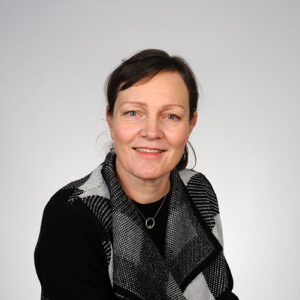Keynotes
Timotheus Vermeulen

Timotheus Vermeulen is Professor in Media, Culture and Society at the University of Oslo. He is co-founder of the webzine Notes on Metamodernism and is a regular contributor to frieze. Vermeulen has published widely on cultural and aesthetic theory, close textual analysis of film and television, and contemporary art, both academically and in a popular context. His research has been translated into over ten languages and has been cited around the globe, including popular media such as the New York Times, Die Zeit, Haaretz, Times Literary Supplement, De Groene Amsterdammer, Klassekampen, Adbusters, Art News, Flashart, Scenario, Salon, Log and TANK and in 2013 his collaborative research with Robin van den Akker and Alison Gibbons inspired a special issue of The American Book Review. Vermeulen has served on numerous committees and juries for art prizes, including Coast Contemporary, the Nam Jun Paik Award and the Bonner Kunstpreis. He also advises and consults on exhibitions, most recently ’IKEA Hacking’ at the IKEA Museum. As part of the Kroller-Muller Museum’s 75 year anniversary, he was amongst the 25 prominent Dutch thinkers and artists tasked with creating an audio tour.
Abstract: Taking sides
A mirror, like any screen, is a dialectic of division-reconnection. It separates physically so as to reunite formally. It separates your side of the room from the space it blocks – the mirror’s back side, if you will. In the process your space is extended (“opened up”) beyond its actual parameters. It – this is the psychoanalytic intervention, of course – separates you from yourself, dividing between phenomenological you and socialized you. And it separates you from your world, turning touch into form – into lines, shapes, demarcations. A mirror creates sides, this is to say, the relations between which it controls: what is shown and what is not, which forms are possible and which are inconceivable.
If we thus think of art, be it literature, cinema, or the fine arts, as a mirror, of ourselves and the society we live in, we are engaging medium and subject in this very dialectic of side-ism: art is a project of siding, and society has sides to it. In this talk, I consider two art works’ negotiation of this side-ism. Both of them engage with what is arguably the most prevalent and influential mirror of the twentieth century, the television box; but they understand its divisions and reconnective properties in entirely different manners that I argue are typical of their (and our) time and have substantial implications for how we, as their audiences, can imagine our lifeworlds. The first, Nam Jun Paik’s Electronic Super Highway from 1995, is generally taken as a defining instance of the postmodern mirroring procedure. The second, Annabel Daou’s Which Side Are You On? From 2012, has been argued to be representative of a metamodern sensibility. Discussed will be: choice/paralysis, agency/discipline, materiality, worlding, and corporeality. In the process, I will also make mention of a few novels of the same timespan which concern themselves with the televisual mirror, including Coupland’s Player One, Foster Wallace’s Infinite Jest, Smith’s White Teeth and Batuman’s The Idiot.
Kati Launis

Kati Launis is Professor of Literature at the University of Eastern Finland. She is currently leading the sub-project of the Digital History for Literature in Finland consortium (2022-2026, AKA), which aims to map and analyse nineteenth-century Finnish fiction based on bibliographic metadata in the national bibliography Fennica. She has previously worked at the Universities of Turku and Helsinki and has been a researcher in several interdisciplinary projects. In addition to her Ph.D. thesis (Kerrotut naiset, 2005) and scientific articles, she has published a biography, Kynän kantama elämä (2017), and is currently working on another biography. Launis leads a working group on critical editions of Minna Canth’s plays at the Finnish Literature Society. She is interested in literary history, digital literary studies, women writers and reception studies. Her constant interest is the dialogue between literature and the society that surrounds it.
Abstract: Mirrors of literary history and the ”great unread” (presentation in Finnish)
Literary history is not only a challenge—nor perhaps even an impossibility, as David Perkins famously and skeptically remarked—but also a labyrinth in which scholars of different periods take divergent paths, each carrying distinct materials, methodologies, and literary paradigms. Does literary history reflect a nation’s broader historical trajectory, the lives of individual authors, their aesthetic criteria, a set of canonized authors and books, diverse themes, currents, genres—or perhaps something else entirely?
In my presentation, I will explore the various mirrors that literary historians from different periods have held up. Indeed, literary history—or literature itself—does not merely mirror or imitate reality. Instead, it constructs narratives from an expansive array of texts and writers, shaping a literary field that continuously evolves through history. When we began our research on nineteenth-century Finnish literature using bibliographic metadata from the Finnish National Bibliography, Fennica, we were immediately confronted with a vast accumulation of titles and texts. Fennica provides the most comprehensive available view of the past, offering valuable insights into the volume and variety of books published and read in Finland. Moreover, it reveals the existence of the ”great unread,” which lies beyond the established canon. Yet, as Australian literary historian Katherine Bode has noted, no database serves as a transparent window into literary history. Rather, databases and mass-digitized collections are interpretative constructions: digital archives do not appear spontaneously; they are products of human effort, layered with historical context, and part of our cultural memory. Thus, databases and digitized collections act as mirrors before which literary historians must critically reflect and determine which elements of the available metadata can serve as a reliable foundation for research.
